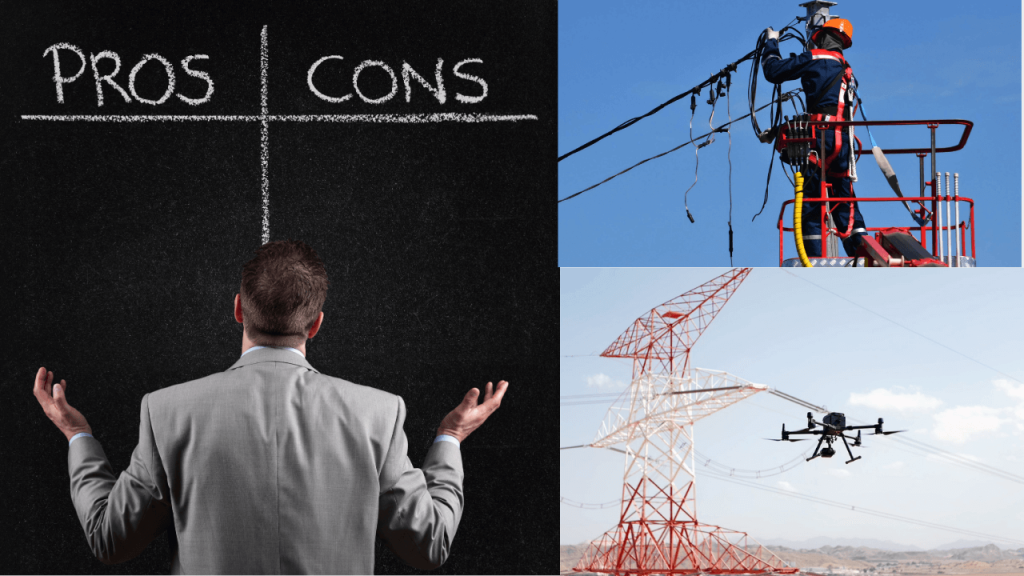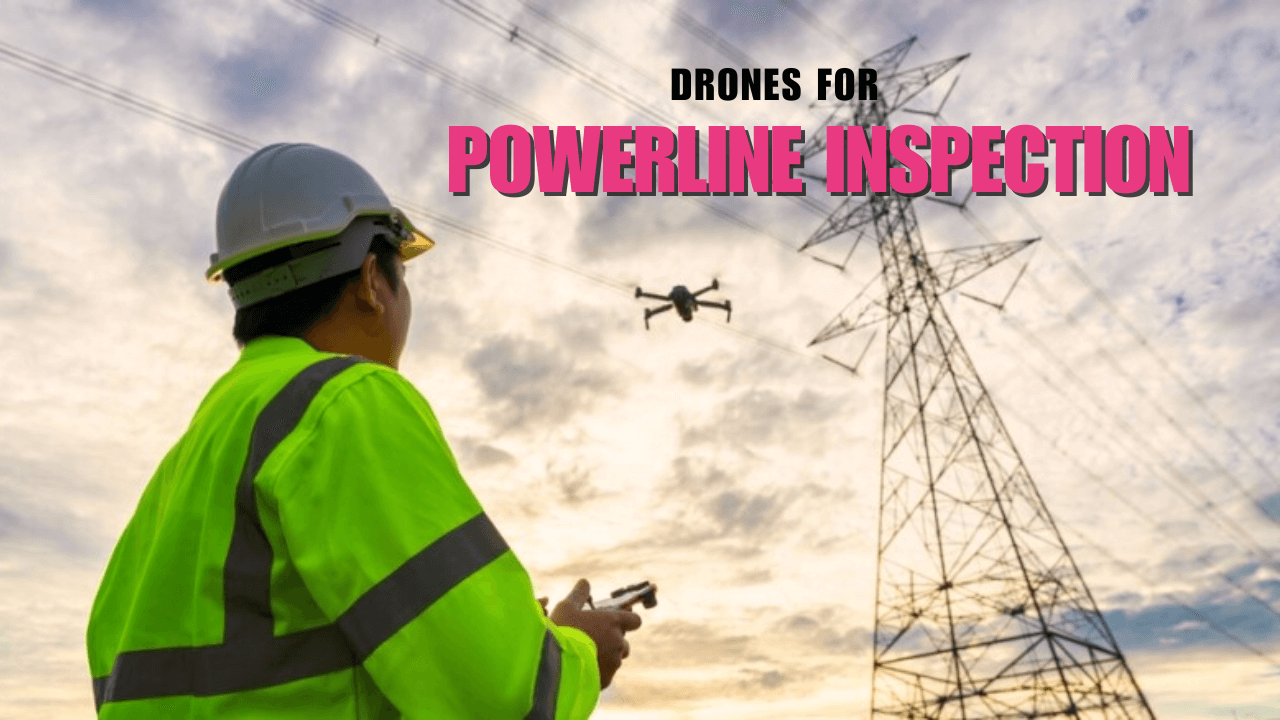Power line inspections are crucial for maintaining a reliable and safe electrical grid.it is good to examine best drones for Power Line Inspections. As technology advances, the question arises: Are drones better than traditional methods for power line inspections? This article explores the pros and cons of both approaches, helping you understand which method might be more suitable for your needs.
Traditional Power Line Inspection Methods
Traditional power line inspection methods have been used for decades and include:
- Ground-based visual inspections: Technicians walk along power lines, using binoculars to check for visible issues.
- Helicopter inspections: Crews use helicopters to fly along power lines, capturing images and video footage.
- Climbing inspections: Workers physically climb towers and poles to inspect equipment up close.
These methods have proven effective but come with their own set of challenges and limitations.
Drones for Power Line Inspections
Drones, also known as Unmanned Aerial Vehicles (UAVs), have emerged as a promising alternative for power line inspections. They offer several advantages:
- High-resolution imaging: Drones can capture detailed images and videos of power lines and equipment.
- Thermal imaging: Some drones are equipped with thermal cameras to detect heat anomalies.
- LiDAR technology: Light Detection and Ranging (LiDAR) helps create accurate 3D models of power line infrastructure.
- AI-powered analysis: Advanced software can automatically detect and categorize potential issues.
Learn more about drone technology in power line inspections
Comparing Drones and Traditional Methods
Let’s compare drones and traditional methods across several key factors:
Safety Considerations
Traditional methods:
- Risk of falls for climbing inspections
- Helicopter accidents
- Exposure to high-voltage equipment
Drone inspections:
- Reduced risk to human personnel
- Ability to inspect hard-to-reach areas safely
- Minimal exposure to electrical hazards
Drones significantly improve the safety of power line inspections by keeping workers at a safe distance from potentially dangerous situations.
Cost-Effectiveness
Traditional methods:
- High labor costs
- Expensive helicopter rentals
- Time-consuming processes
Drone inspections:
- Lower operational costs
- Reduced manpower requirements
- Faster inspection times
While the initial investment in drone technology can be substantial, the long-term cost savings often outweigh the upfront expenses.
Efficiency and Accuracy
Traditional methods:
- Time-consuming processes
- Limited by human visual capabilities
- Potential for human error
Drone inspections:
- Rapid data collection
- High-resolution imagery and thermal scanning
- AI-assisted analysis for consistent results
Drones can inspect large areas quickly and provide more detailed information than traditional methods, improving overall efficiency and accuracy.
Environmental Impact
Traditional methods:
- Helicopter fuel consumption
- Potential disturbance to wildlife
- Vehicle emissions for ground-based inspections
Drone inspections:
- Lower carbon footprint
- Minimal noise pollution
- Reduced disturbance to surrounding ecosystems
Drones offer a more environmentally friendly approach to power line inspections, aligning with sustainability goals.
Limitations and Challenges on Drones for Power Line Inspections

While drones offer numerous advantages, they also face some limitations:
- Regulatory restrictions: Drone operations are subject to various regulations and airspace restrictions.
- Weather limitations: High winds, rain, or extreme temperatures can impact drone performance.
- Battery life: Current battery technology limits flight times, requiring multiple flights for large-scale inspections.
- Data management: Processing and analyzing large amounts of collected data can be challenging.
Read about overcoming challenges in drone inspections
The Future of Power Line Inspections
As drone technology continues to advance, we can expect:
- Improved battery life: Longer flight times will enable more extensive inspections.
- Advanced sensors: Better cameras and sensors will provide even more detailed data.
- AI and machine learning: Enhanced automated analysis will further improve efficiency and accuracy.
- Integration with other technologies: Combining drones with IoT devices and smart grid systems for comprehensive monitoring.
Conclusion
While traditional methods of power line inspection have served the industry well, Drones for Power Line Inspections offer significant advantages in terms of safety, cost-effectiveness, efficiency, and environmental impact. As technology continues to improve, drones are likely to become an increasingly integral part of power line inspection processes.
However, it’s important to note that the best approach may involve a combination of both methods. Drones for Power Line Inspections can handle routine inspections and cover large areas quickly, while traditional methods may still be necessary for certain detailed examinations or in situations where drone use is restricted.
Ultimately, the choice between drones and traditional methods for power line inspections depends on specific needs, regulatory environment, and available resources. As the technology evolves, power companies should stay informed about the latest developments to make the best decisions for their inspection strategies.
What are your thoughts on using drones for power line inspections? Have you had experience with either method? Share your opinions and experiences in the comments below!
